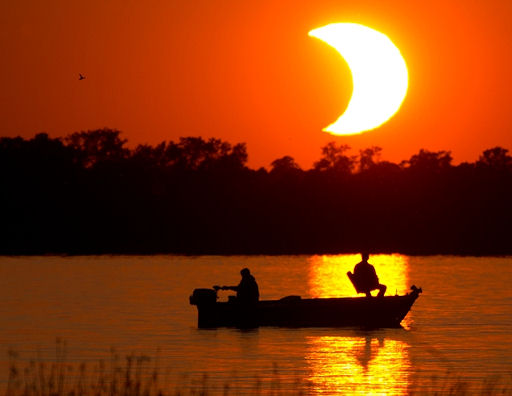INTERPLANETARY SHOCK WAVE: An interpanetary shock wave possibly associated with the M5-class solar flare of May 17th swept past Earth on May 20th around 0200 UT. The shock's arrival caused geomagnetic activity around the poles, and several outbreaks of high-latitude auroras. Images: #1, #2.
FANTASTIC ECLIPSE: The Moon passed in front of the sun on Sunday, May 20th, producing a deep solar eclipse visible across the Pacific side of Earth. Sunlight dimmed, the air cooled, ordinary sunbeams turned into fat crescents and rings of light. Here is a sample view from Lake Waconia, Minnesota:

"I drove to the lake, and a couple of fishermen were kind enough to drop their lines in the glitter path of the eclipse," says photographer Tyler Burg. "It was a fantastic composition!"